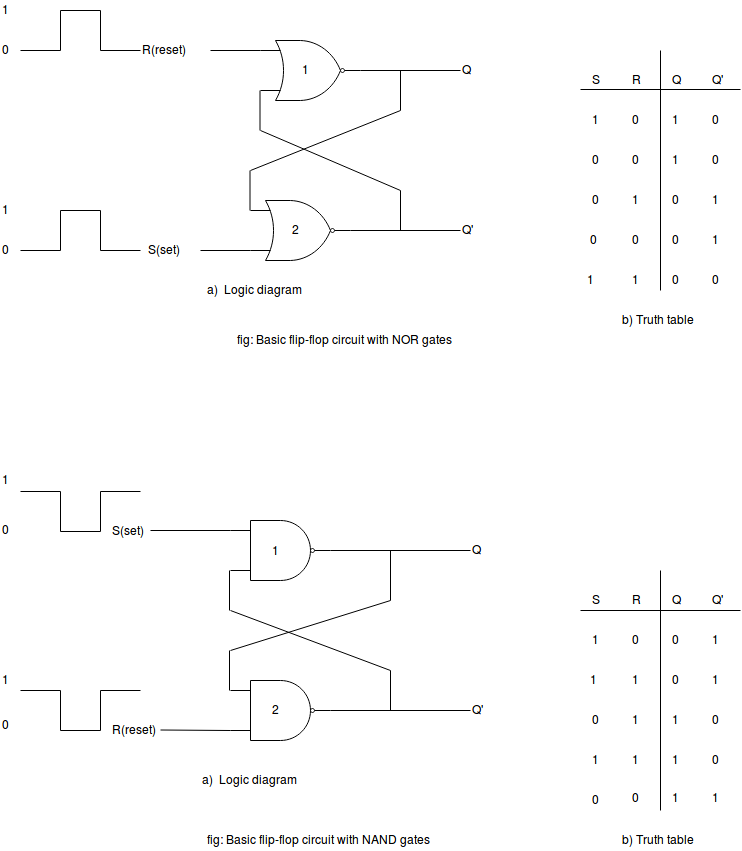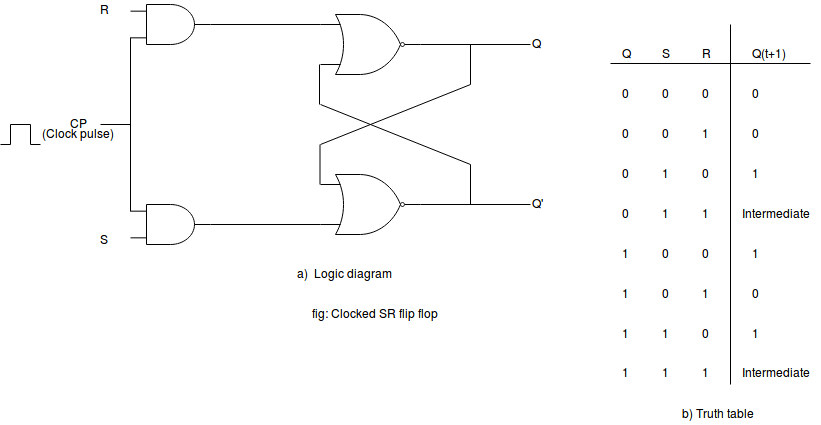S-R Flip-flop/Basic Flip-Flop
Flip flops are an application of logic gates. A flip-flop circuit can remain in a binary state indefinitely (as long as power is delivered to the circuit) until directed by an input signal to switch states.
S-R flip-flop stands for SET-RESET flip-flops.
The SET-RESET flip-flop consists of two NOR gates and also two NAND gates.
These flip-flops are also called S-R Latch.
The design of these flip flops also includes two inputs, called the SET [S] and RESET [R]. There are also two outputs, Q and Q’.

Clocked S-R Flip-Flop
The operation of a basic flip-flop can be modified by providing an additional control input that determines when the state of the circuit is to be changed.
The limitation with a S-R flip-flop using NOR and NAND gate is the invalid state. This problem can be overcome by using a stable SR flip-flop that can change outputs when certain invalid states are met, regardless of the condition of either the Set or the Reset inputs.

A clock pulse is given to the inputs of the AND Gate. If the value of the clock pulse is ‘0’, the outputs of both the AND Gates remain ‘0’.
